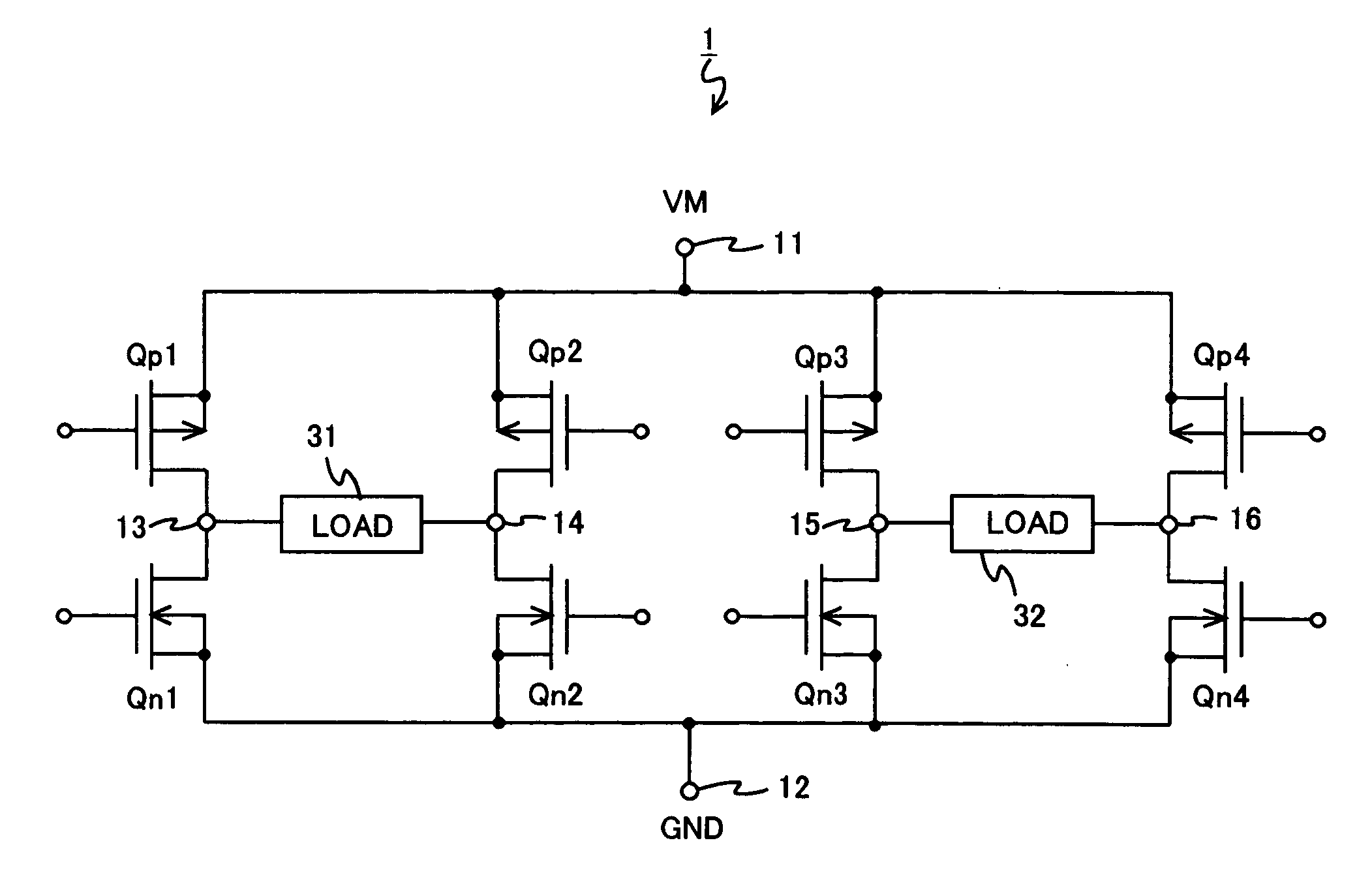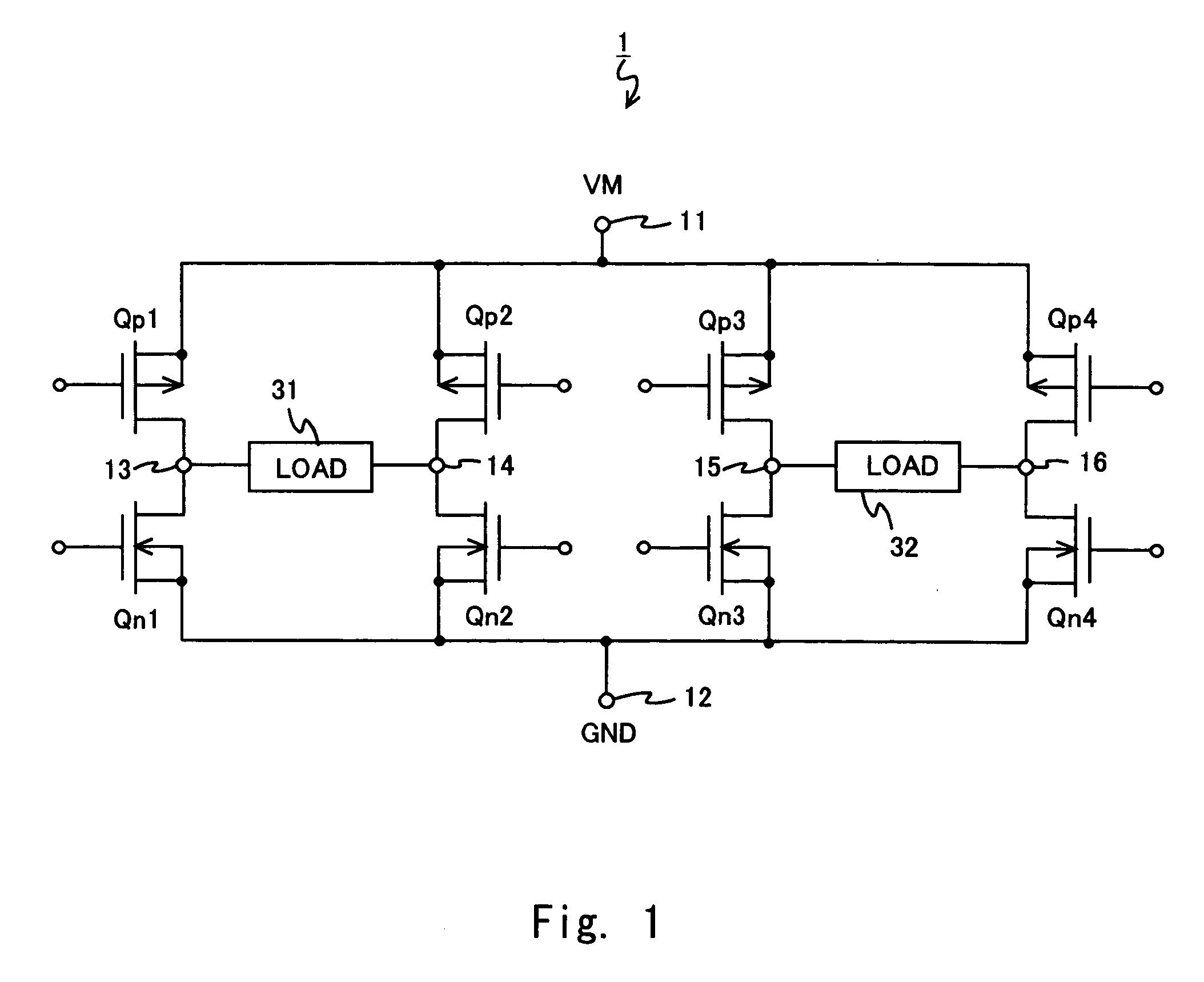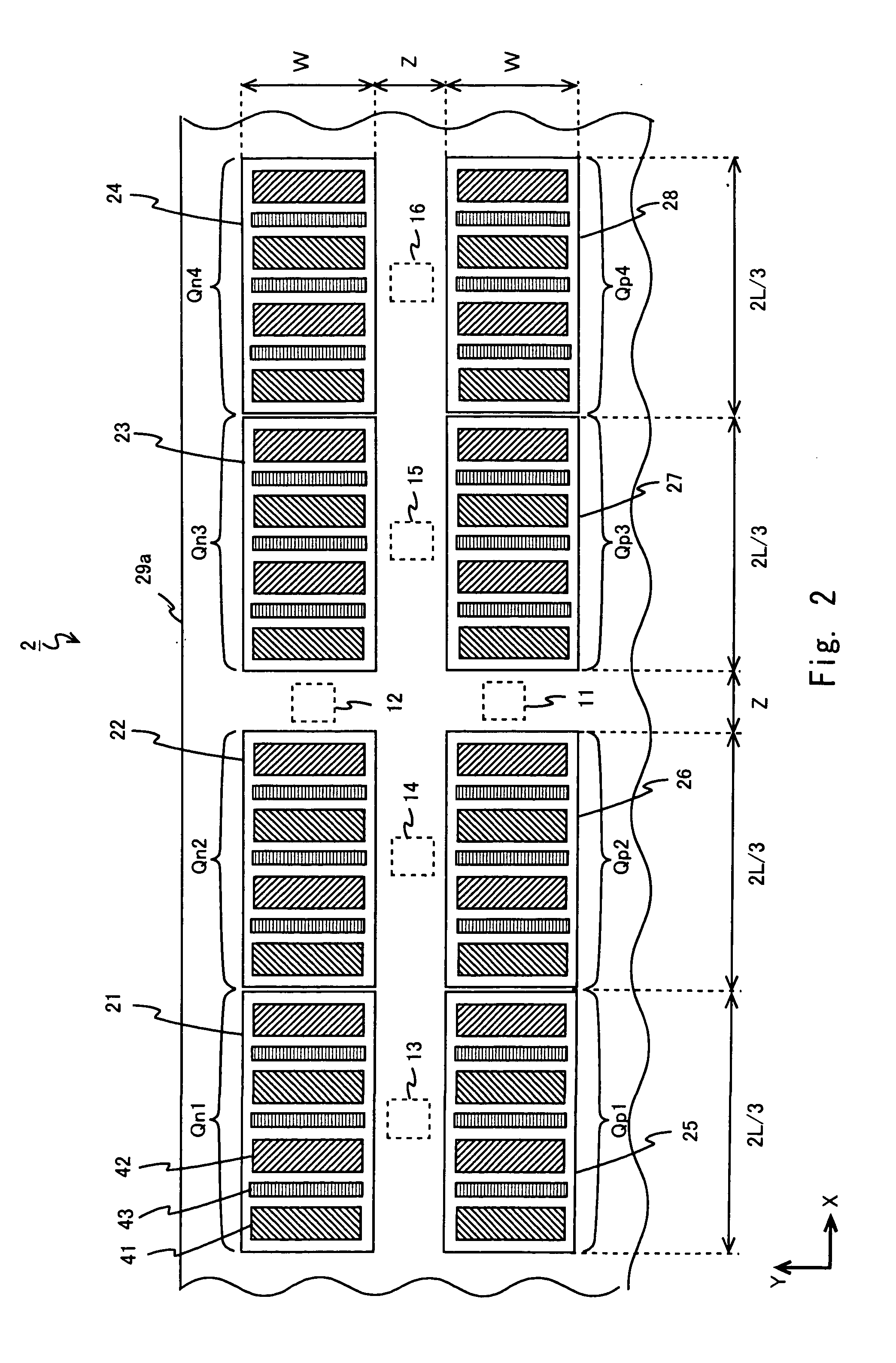Semiconductor device
- Summary
- Abstract
- Description
- Claims
- Application Information
AI Technical Summary
Benefits of technology
Problems solved by technology
Method used
Image
Examples
Embodiment Construction
[0037]The components used in [WHAT IS CLAIMED IS] are added with parentheses to the numbers or symbols used in [DETAILED DESCRIPTION OF THE EXEMPLARY EMBODIMENTS] below in order to make clear the correspondence relation between the numbers or symbols used in [DETAILED DESCRIPTION OF THE EXEMPLARY EMBODIMENTS] and the components used in [WHAT IS CLAIMED IS]. However, it is not intended to use the correspondence relation for interpreting the technical scope of the invention described in [WHAT IS CLAIMED IS]. Now, an exemplary embodiment of the present invention will be described with reference to the drawings. FIG. 1 shows an H bridge circuit 1 with a two-channel structure according to the exemplary embodiment of the present invention. The H bridge circuit 1 includes P type power MOS transistors Qp1 (seventh transistor), Qp2 (third transistor), Qp3 (fourth transistor), Qp4 (eighth transistor), N type power MOS transistors Qn1 (fifth transistor), Qn2 (first transistor), Qn3 (second tra...
PUM
 Login to View More
Login to View More Abstract
Description
Claims
Application Information
 Login to View More
Login to View More - R&D
- Intellectual Property
- Life Sciences
- Materials
- Tech Scout
- Unparalleled Data Quality
- Higher Quality Content
- 60% Fewer Hallucinations
Browse by: Latest US Patents, China's latest patents, Technical Efficacy Thesaurus, Application Domain, Technology Topic, Popular Technical Reports.
© 2025 PatSnap. All rights reserved.Legal|Privacy policy|Modern Slavery Act Transparency Statement|Sitemap|About US| Contact US: help@patsnap.com



